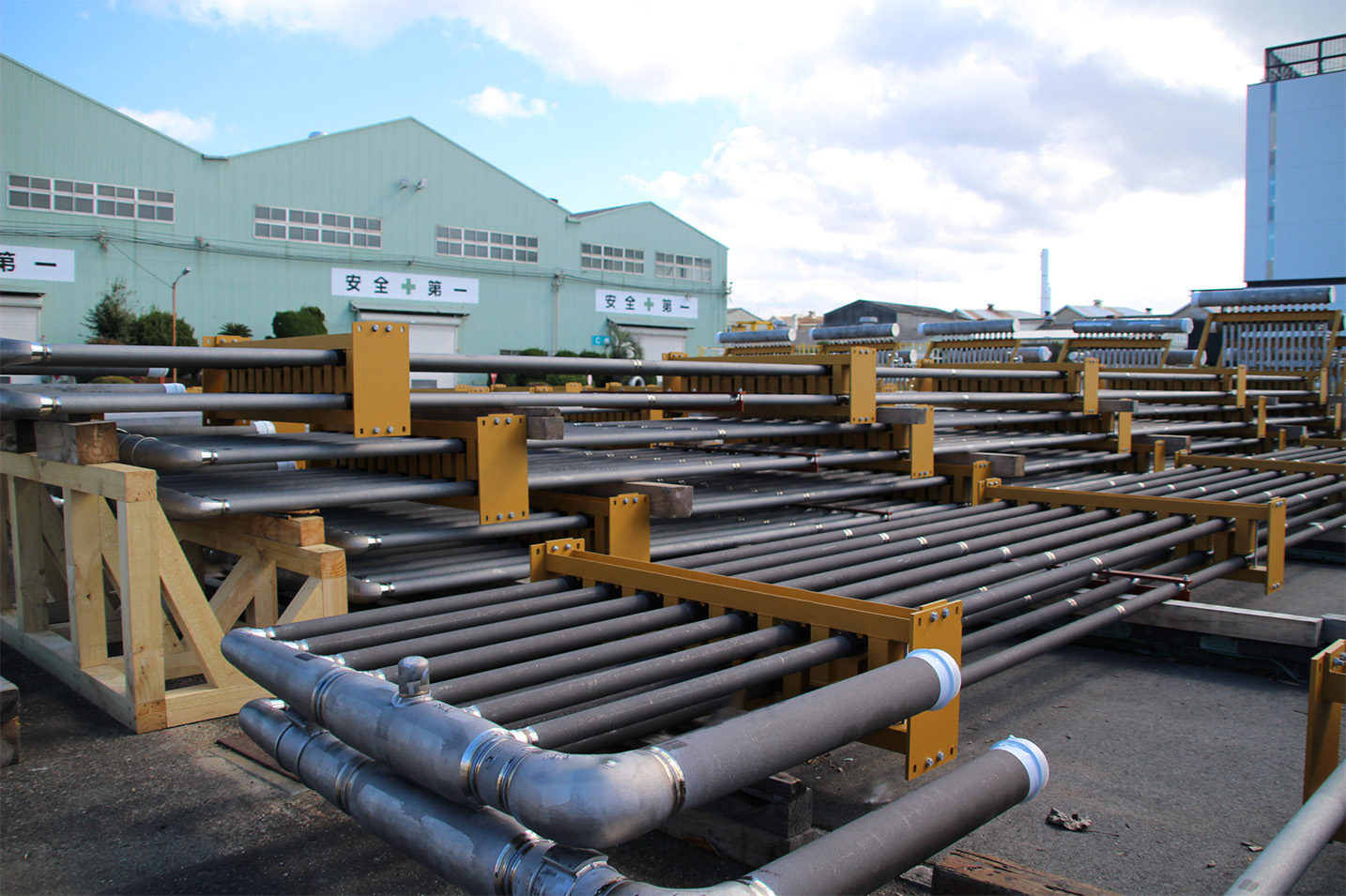Renewal of Production Equipment of Cracking Tubes for the Petrochemical and Hydrogen Markets The upgrade to state-of-the-art production equipment aims to expand production capacity and meet the growing demands of the hydrogen sector.
September 10, 2024
Kubota Corporation
Kubota Corporation (Head Office: Naniwa-ku, Osaka, Japan; President and Representative Director: Yuichi Kitao; hereinafter 'Kubota') will replace all melting and casting equipment in the existing cracking tube production equipment at the Hirakata Plant (Hirakata-shi, Osaka) with state-of-the-art equipment.
Along with the addition of a production line announced in September 2023 to expand production capacity, Kubota will increase its current melting and casting capacity to approximately 230% by 2030 to address the high demand in the petrochemical market. Kubota will also enhance its production system in preparation for expansion into new hydrogen-related markets, where demand is expected to grow in line with the global carbon neutrality trend.
1. About Cracking Tubes
- Cracking tubes are heat-resistant cast steel pipes used in the thermal decomposition and reforming processes of petroleum-derived raw materials. This Tubes must exhibit high heat and corrosion resistance to withstand the severe operating conditions.
- Kubota offers "cracking coils" and "reformer tubes" as typical examples of its cracking tube products for manufacturing and sales. Cracking coils are used in petrochemical plants to produce ethylene and propylene, which serve as raw materials for synthetic resins. This is accomplished through a process called "thermal cracking," in which petroleum-derived substances such as ethane and naphtha are heated to high temperatures. Reformer tubes are utilized in petroleum refining plants for the "reforming" process, which extracts industrial hydrogen by heating natural gas and other feedstocks at high temperatures and pressures.
- Kubota has unique high-performance products within the cracking coils category, such as the Mixing Element Radiant Tube (MERT), which features special helical elements on the inner surface to stir and mix the fluid gases, thereby improving plant productivity, and "AFTALLOY," which extends tube life with a special internal coating treatment. These advantages contribute to our position as the top global market leader in cracking tubes*1.
- Kubota's expertise in developing and manufacturing cracking tubes is expected to play a key role in new hydrogen-related applications emerging from the carbon neutrality trend. This includes equipment for producing hydrogen through the thermal cracking of ammonia and hydrogen reduction steelmaking plants, which are anticipated to significantly reduce CO2 emissions.
- *1.Kubota's research
2. Background and Objectives
- The demand for ethylene remains robust, fueled by economic development and population growth in emerging markets. As a result, the demand for cracking coils is expected to continue its expansion, driven by the construction of new plants primarily in Asia and the modernization of existing facilities in North America.
- According to the International Energy Agency (IEA), the global hydrogen demand is projected to reach 136.5 million tons per year by 2040*2. In Japan, the revised Basic Hydrogen Strategy of 2023 has set targets for the annual hydrogen supply of 3 million tons by 2030, 12 million tons by 2040, and 20 million tons by 2050. This represents a significant expansion from the current estimated supply of about 2 million tons per year*3. Given this context, the construction of large-scale hydrogen-related plants is anticipated in the future.
- In September 2023, Kubota decided to invest in expanding production capacity and is currently advancing the addition of a new production line. This additional investment will replace the existing melting and casting equipment with state-of-the-art facilities. This upgrade will not only meet the robust demand in the petrochemical market but also address new opportunities in the hydrogen-related markets, aiming to achieve more sustainable and resilient business foundation.
- *2.IEA “Energy Technology Perspectives 2020” Global hydrogen demand by sector in the Sustainable Development Scenario, 2019-2070
- *3.Ministry of Economy, Trade and Industry, Japan website "Basic Hydrogen Strategy"
https://www.meti.go.jp/shingikai/enecho/shoene_shinene/suiso_seisaku/pdf/20230606_5.pdf
3. Overview of Equipment Investment
- Contents: Replacement of melting equipment (e.g., electric furnaces) and casting equipment with state-of-the-art equipment, and reinforcement of plant buildings.
- Timeline: Construction is scheduled to begin in 2025 and operation is planned to start in 2030.
- Investment Amount: Approximately 10 billion yen, including around 4 billion yen allocated for upgrading melting and casting equipment.
-

Cracking Coils
References
- Press release as of September 5, 2023
Expansion of Production Capacity of Cracking Tubes for Petrochemical Plants:
Tackling high demand and production of hydrogen to achieve carbon neutrality with the expansion of a production line at Hirakata Plant
https://www.kubota.com/news/2023/20230905.html